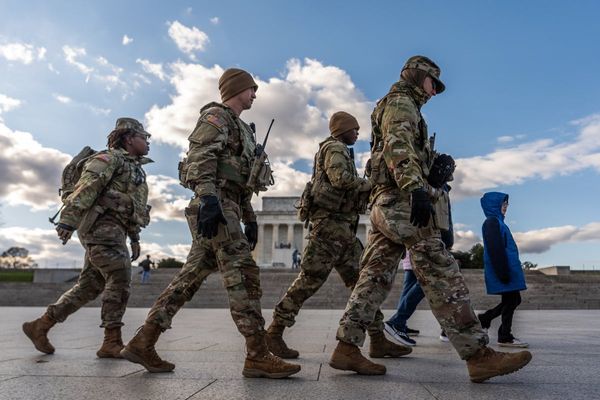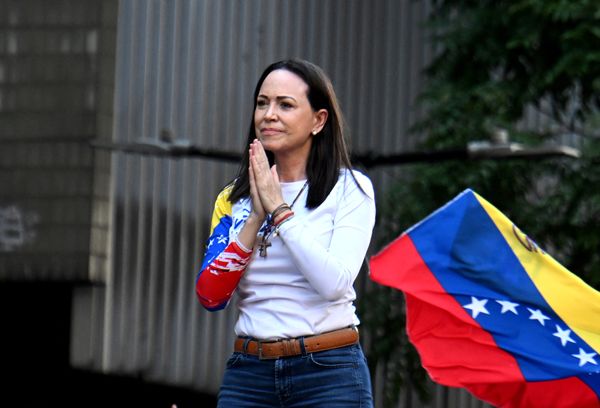
Donald Trump’s budget would cut funding for the US Centers for Disease Control and Prevention (CDC) by 53%, eliminating 61 programs and laying off another 16% of health agency staff, according to a new report – moves that would drastically reduce disease prevention and fuel more chronic illness, public health leaders say.
“We cannot lose this,” said Joseph Kanter, the CEO of the Association of State and Territorial Health Officials. “This is crucial to the health of every person in every community across this country, whether they realize it or not.”
Federal cuts are already reverberating throughout the US. The Trump administration has clawed back more than $12bn from public health budgets.
There have been delays in releasing funds already appropriated by Congress, which means local programs have had to shutter even when they were supposed to be funded. More than 20,000 employees have left health agencies in the past eight months because of layoffs, firings and resignations.
“We’re facing really significant threats to our ability to invest in chronic disease prevention with what’s been happening these last few months,” said Lori Tremmel Freeman, the CEO of the National Association of County and City Health Officials.
The public health system in the US is fragmented by state, but it is underpinned by funding and support from the CDC. Some 80% of the CDC’s funding flows to state, local, territorial, and tribal health departments.
“Cuts to federal funding are cuts to state and local public health budgets,” said J Nadine Gracia, the president and CEO of the Trust for America’s Health, a nonpartisan, non-profit public health policy research and advocacy organization.
The organization has released reports on trends in state and federal funding for public health for more than two decades.
But this year’s Trust for America’s Health report is different as the US undergoes seismic shifts in health policy and priority, including funding cuts, staff layoffs, funding clawbacks and agency reorganizations, Gracia said in a media briefing with Kanter and Freeman.
“The risks to our nation’s health security are real and increasing,” Gracia said.
The new budget would end programs on cancer, diabetes, heart disease and stroke, obesity, global and domestic HIV/Aids, global immunization, and substance use.
The program on emergency preparedness for public health – the primary source of federal funding for state and local emergency preparedness – would be more than halved. Another 40 programs at the Substance Abuse and Mental Health Services Administration would also be cut.
Trump’s budget would move about 26% of the lost funding to two newly proposed divisions within the US Department of Health and Human Services (HHS): the “administration for a healthy America” and the “office of strategy”.
But it’s not clear what those divisions would do, and the restructuring would reduce HHS staff by 16%.
Entire divisions at the CDC have already been laid off, including those working on smoking cessation, drowning prevention, and tribal health.
“In addition to the funding that CDC supports, CDC provides invaluable technical assistance and expert guidance,” Kanter said.
As the former local health director in New Orleans and former state health director in Louisiana, he said: “I can name many, many outbreaks and other public health threats that I lacked the capacity to fully respond to, or the experts needed on my own within my agency, and relied on the CDC for expert opinions.”
Those still working in public health have found their resources and time stretched by new challenges under the Trump administration.
Health departments across the country have spent the past few weeks scrambling to ensure Covid vaccines that were widely accessible only months ago are available again now.
“This backtracking feels like the worst possible thing that can happen for public health,” Freeman said.
The US spends $4.9tn on healthcare each year, and 90% of that spending goes to chronic and mental health conditions. Public health works to prevent and manage these diseases “for a tiny fraction” of those costs, in order to keep the spending from inflating even more, Freeman said.
“We need prevention to work well, because the acute care system cannot withstand a large increase in sick patients across the country,” Kanter said.
Gracia noted: “The concern of reduced life expectancy [is] a sobering possibility, given that the US already has the lowest life expectancy among high-income nations.”
Rural areas are expected to be hit disproportionately hard by the shortages, as will communities that have been marginalized because of racism and poverty.
Some programs, such as substance use services, are funded largely through the CDC. Last year, overdose deaths dropped by nearly 27% – encouraging but “fragile” progress that is now at risk, Gracia said.
In 2026, the United States, as well as Mexico and Canada, will host the Fifa World Cup, the largest gathering in the world. Public health officials are preparing for potential outbreaks that could arrive with the international event.
Yet the CDC’s work tracking global health threats has also been slashed.
“It’s much easier to stop an outbreak when it’s small or limited to a particular region of one country than when it grows and crosses borders, and the CDC is so good at that. They’re so good that very few people know about it,” Kanter said – because many outbreaks are contained before they spread further.
“As a health officer from a city that receives a lot of international travel, I’ve been deeply, deeply thankful for that work. I think that work is in jeopardy.”
The US House of Representatives would cut $1.7bn from the CDC’s budget, but the US Senate has proposed less steep cuts, potentially funding the agency close to previous levels.
Public health “is widely appreciated when people know about it”, Kanter said.
“There remain thousands and thousands of deeply committed public health professionals who show up every day with one singular goal: to help make other people’s lives better.”







